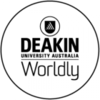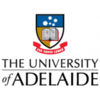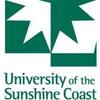Towards more engaged and interactive knowledge, generation, exchange and use
Research into the operation of coastal knowledge systems was undertaken to develop a broadly applicable model for understanding and improving the interactions between coastal science and decision-making. The model and process characterises the operating environment for coastal sciences, and identify possibilities for intervention.
We define the operating environment for sciences as the dynamic and cumulative effects of a variety of elements (including actors, institutions, stakes, issues, relationships, and objects) on the interactions between scientific knowledge and decision-making. To mediate between ‘issues’ and ‘stakes’ requires some sort of ‘boundary spanning’, which embodies a diverse range of possible practices.
The model outlined below was developed to improve the way scientific research is incorporated into coastal zone management. The model can be applied at project, program or organisational level. The emphasis is on practical application of the context of appropriate boundary spanning activities by scientists and/or science agencies.

Problem Structure:
Is the problem well, moderately or poorly structured, or unstructured?
- Well-structured problems: Where there are converging values and/or low stakes a problem can be considered as well-structured and is amenable to direct application of technical information.
- Moderately structured problems: Where there is a possibility of a majority reaching agreed goals, and relatively high certainty about science, a problem can be considered as moderately structured.
- Poorly structured problems: These are problems in which dilemmas are apparent such that an outcome that is considered positive will create another that is considered negative, often depending on the divergent values.
- Unstructured problems: In this problem structure there are divergent perspectives of what the issue is, and therefore no agreement about goals associated with the issue.
Design Elements:
Here is it important to clarify the discourses, products, processes, relationships, institutions, structures or organisations that could be built, identifying how, by whom, where, for whom, and when. The five key design elements and their focus can be considered as:
- Science Communication (product focus): Management agency has well defined needs for information and knows how to apply it, useful for well-structured problems (low stakes, value convergence, and well defined issues).
- Informal linkages (relationship focus): Where problems are poorly structured or unstructured building informal linkages among key stakeholder groups can begin to create mutual understanding of stakes and values across groups, thereby allowing clearer definition of issues.
- Brokering/intermediary (actor focus): build capacity within organisations that manage problems in which science and community values are both important.
- Temporary organisation (structure/network focus – e.g. reference groups): complex, short-term, managed within specific organisation.
- Boundary organisation (organisation focus): long-lived, persistent ‘wicked’ problem, managing complex conditions, often within multiple organisations (local, state commonwealth, private) – potential for overreach.










